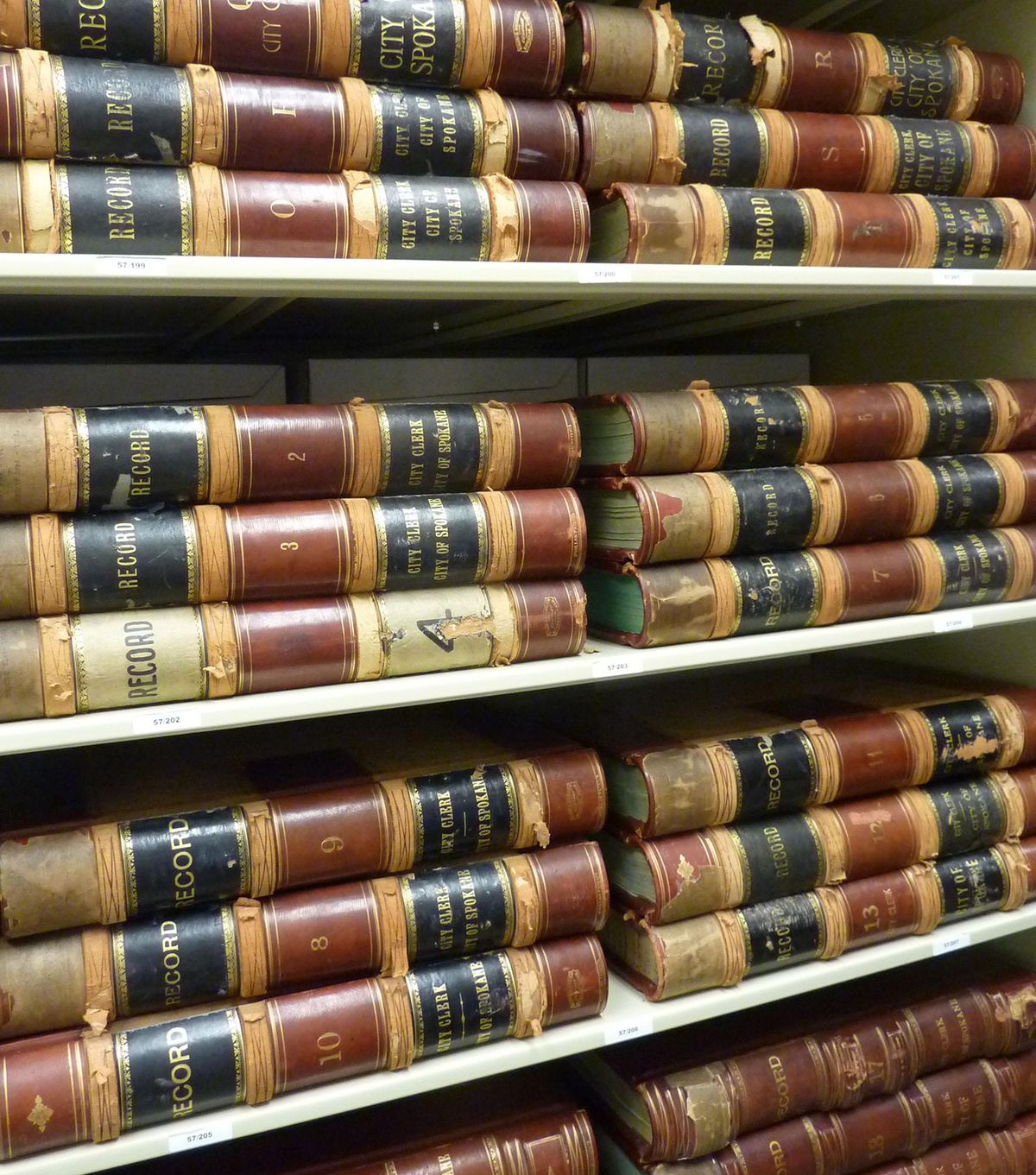Landmarks: Archives hold beauty and history

For history hunters, there’s no place like the Washington State Regional Archives.
There are five branches in the state, with Eastern Washington University in Cheney serving as home to the Eastern Region branch. Want to find out if you have an ancestor accused of horse theft in pre-statehood days? Or just what kind of business was being conducted by city councils in a given year? The archives have information for you.
There are lots of records – currently 28,000 shelf-feet of them. “We collect, preserve and provide access to local government records for the 11 counties of Eastern Washington,” said Lee Pierce, archivist with the Eastern Regional Branch of the Washington State Archives.
For example, people wanting to learn full details about any property in Spokane County can access the 4,300 volumes of Spokane County assessor’s field books that are kept there (the other counties have yet to transfer similar records to the archives). All that’s needed is the parcel number. Pierce said these records are the most researched in their vast collection, used by officials, businesses and individuals for everything from disputes over zoning laws or boundaries, to just plain interest in the history of a location or people wanting to know what’s transpired regarding their own property.
Some of the records are works of art. Some of the earliest City of Spokane council journals date to 1887 and are bound in leather, with the covers containing suede inserts; the inside covers are decorated with paper displaying elaborate designs created by dipping them in inks that had been swirled by running a comb through them, Pierce said. The minutes contained within were written by individuals with exquisite handwriting.
“I know it sounds a little melodramatic, but I do think our work is kind of sacred,” Pierce said. “But understand, the records provide relatively dry information. When you find what you’re looking for, then it’s pretty easy to go to newspapers from that time for context and details for events you might be researching.”
The fire which consumed downtown Spokane on Aug. 4, 1889, eventually destroying more than 30 blocks, is a good illustration of what he is talking about. It is particularly interesting to see in the City Council journals from before the fire that money was allocated to install a system for pulling water from the Spokane River to fight possible fires, Pierce said, and that building codes were changed to require structures in the downtown area to be constructed using masonry and stone. The new codes were for new building, but there was no legal right to pull down already-built wooden structures.
“You can see from the records they were aware of the risks of fire,” he said.
There is also information about the launch of the investigation into why the fire suppression system failed. The superintendent of the city’s water works was at first blamed but later exonerated. And additional entries in the journals provide engineering information explaining that the pumps failed because the water level in the river was lower than expected, causing the pumps to lose their suction ability.
These “dry facts” were expanded upon in newspaper accounts of the time.
The archives also hold a large drawing, displayed on an easel, of what Pierce describes as an idealized bird’s-eye view of Spokane 11 months after the big fire, showing how Division Street becomes Victoria Street north of the river and how Spokane University sits way off to the west, in the far upper left of the drawing, among other historically interesting sites.
The archives contain records of court cases from 1859 and marriage records in 1861, the oldest marriage on record being that of James O’Bryan and Susanna Finley, who were wed Oct. 10, 1861, in Pinkney City Township. The official record shows that the groom brought one horse, one saddle and one bridle into the marriage, and the bride contributed two cows, two calves, one bull and one horse.
Prior to moving into the current structure in 2004, the archives administrative office was in one location and what was then 2,000 shelf-feet of records were housed across campus, necessitating numerous trips back and forth every day.
“Eastern was very generous in providing the land for this new building,” Pierce said, and noted that they still have room to expand their records collection. They also share the structure with the Washington State Digital Archives, home to all of the digital archives for all levels of government throughout the state, from water districts to state government – 59 million in all.
In addition to his work as archivist, Pierce – who is also the author of two murder mysteries, “The Vampire Congress” and “The Vampire Mask” – travels to the 11 counties gathering records to incorporate into the collection. They continue working on boxing and putting records in folders made of acid-free materials, and then storing them in environmental conditions to limit exposure to light and contaminants.
“I love the work I do,” Pierce said. “I get a real thrill out of helping someone find the record they need or the information they have been searching for. There is almost no end to the stories one can tell with the records we hold here, and I learn something new every single week.”